Low-slope Roofs and Sustainability
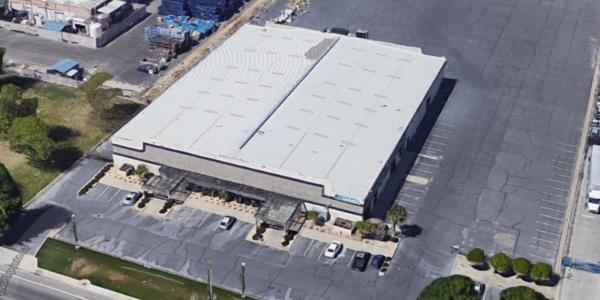
By Will Lorenz for General Coatings.
How using SPF can help you meet Title 24 regulations in California
California’s Building Energy Efficiency Standard, Title 24, was updated on January 1, 2010, by the California Energy Commission. While a decade has passed since this decision, these updates still significantly affect Southern California’s commercial buildings. The roofs of these commercial buildings are usually over 25 years old, and thus have maintenance issues.
According to the Department of Energy (DOE), three-quarters of the roofing installed each year is reroofing on older buildings. Additionally, commercial and industrial buildings in California account for over half of the total electricity use in the state. These statistics provide excellent reasons for installing more environmentally responsible and longer lasting products rather than simply replacing a failed roof with more of the same.
Energy conservation and energy cost reductions are primary concerns to building owners, architects, building industry professionals and municipal officials. Commercial buildings’ decision makers have many sustainable roofing options from which to choose, whether for new construction, reroofing, or maintenance and repair projects. And, since approximately $40 billion is spent annually in the United States to cool buildings, approximately one-sixth of all energy consumed annually, the type of roofing material and application procedure selected has a direct effect on buildings’ energy efficiency and maintenance requirements. Additionally, to further encourage sustainability, the federal government has passed several different bills that allow commercial property owners to take advantage of tax credits for retrofitting existing buildings with environmentally friendly materials and materials that cut energy costs.
Rain and low-sloped roofs
In July 2009, the National Oceanic and Atmospheric Administration (NOAA) officially announced the arrival of El Niño, a climate phenomenon with a significant influence on global weather, ocean conditions and marine fisheries. Although there are some benefits to El Niño, Southern California gets hit with damaging winter storms. On January 19, 2010, the NOAA reported that “Southern California could see close to 20 inches of rain in some areas.” Rain, especially a driving, soaking storm within a short duration, puts roofs to the test.
Every roof is an at-risk location for ponding water. Many commercial building roofs have HVAC equipment, vent pipes, skylights and other building elements, which are all “holes.” Additionally, maintenance crews walk on roofs, leaves and sticks are blown across roofs or they may even have a billboard secured to the top; all providing an opportunity for leaks and water damage. Leaks can also be the result of poor roof system installation, mechanical damage such as dropped screwdrivers or knives, plugged roof drains, roofing material failure or HVAC problems. Single ply roof membranes deteriorate as they age and can experience puncture problems. Additionally, single-ply roofs require flashing material (sealant), which frequently hardens and cracks over time resulting in leaks. This weak point near drain or duct penetrations allows ponding water to enter through in the roof, saturate the insulation and cause damage to the roof structure.
A significant potential failure point is at the seams, which is held together with adhesives. As most roofs age, UV damage and thermal expansion causes them to become more brittle and less resilient. This means that membrane roofs become less resistant to any movement, resulting in accelerated deterioration from common stresses like temperature changes, foot traffic and substrate movement; because the roof cannot flex or stretch as well as it did when new, it cracks or opens at the seams.
Insulation layers are an integral part of the roof assembly and must function in concert with the roof membrane and the structural deck. For many years the use of polysocyanurate (polyiso) roof insulation has been widespread in the roofing industry. Unfortunately, if this insulation becomes exposed to water from a leak in the membrane it will absorb it and degrade its insulation performance. If the moisture cannot evaporate through the impermeable membrane above then it will accumulate and migrate to the deck. This trapped moisture starts deterioration that can eventually penetrate the deck and damage the interior contents of the building.
Water is the biggest enemy of any insulation because it transfers heat 24 times faster than air. Third-party testing has verified that moisture-susceptible insulations can lose up to 80 percent of their insulating value when exposed to moist conditions. This means more energy and money is needed to condition the building.
Moisture in low-sloping roofing is a multibillion-dollar problem. It is estimated that energy losses through roofs in the U.S. increased by 70 percent because of the loss of insulation’s thermal resistance due to moisture. When water gets underneath roofing membranes, it can work its way to the roof deck and cause the roof structure to deteriorate. Extra moisture contributes to mold proliferation elsewhere in a building.
As commercial building stakeholders, it’s important to understand the requirements of Title 24.
Title 24: The energy efficiency standards for residential and non-residential buildings
In 1978 the California Energy Commission established Title 24 in response to a legislative mandate to reduce the state’s energy consumption. The 2005 energy standards consider a cool roof to be the standard in California for new construction or retrofit of low slope roofs on non-residential buildings.
The bill specifies that new and replacement commercial roofs – virtually any low slope roofing project that requires a construction permit – must have a minimum initial thermal emittance of 75 percent and a minimum solar reflectance of 70 percent, as rated by the Cool Roof Rating Council. For clarification, reflectivity is the percentage of the sun’s heat a roof keeps off a building and emissivity is the percentage of heat a roof lets out of a building.
The new cool roof requirements affect new construction, significant repairs of existing roofs, reroofing, plus additions and alterations of existing buildings and homes.
Cool roofs and California
Roofs serve the vital and obvious function of protecting a building from the elements – precipitation, and heat and cold, for example. The most common type of roof for commercial buildings, in California and throughout the county, is low sloped – a surface with a pitch less than or equal to 2:12.
Selecting cool roofing materials and systems that reflect the sun's radiant energy, before it penetrates building interiors, will mitigate urban heat island effects. On a sunny summer day, a typical roof surface can reach temperatures that are nearly 100°F above the ambient temperature. A cool roof, by contrast, stays at or near the ambient temperature due to the characteristics of its outer layer and can significantly reduce summer electrical energy use. Even though Southern California residences near the coast may not use much air conditioning, commercial buildings aren’t designed for passive cooling and require continuous air conditioning.
Studies show cool roofs can typically reduce summer air conditioning energy use by 10 to 20 percent and energy use by 50 percent. A cool roof product must have a surface reflectivity of 70 percent or more and an emissivity of at least 75 percent to qualify for Title 24 energy credits.
Cool roofs’ characteristics:
-
Reflect sun’s radiant energy before it penetrates into a building’s interior.
-
High solar reflectance and higher thermal emittance than a non-cool roof.
-
Less energy absorbed into roof system and building – saving on annual electricity bills by reducing air conditioning costs.
-
Increase roofs’ life cycle because of reduced building movement.
-
Stay at or near ambient temperatures even on the hottest summer day.
-
Improve insulation performance to reduce winter heat loss and summer heat gain.
-
Potentially reduce HVAC capacity requirements.
Typically, 80 percent of low-slope roofs are black and can reach temperatures ranging from 150°F to 200°F. White roofs, as mentioned, can average 120°F, significantly cooler than black roofs. And while white surfaces can be applied on black roofs, this often results in a short-term benefit, where effectiveness diminishes quickly. The traditional black asphalt roof is usually low in reflectivity and high in emissivity and over time will heat up and retain the day’s heat. The heat absorption causes the roof to expand during the day. At night when the outside temperature cools off, the roof will contract. Since asphalt and single-ply roofs are not very flexible, expansion and contraction of the roofing materials – as they go through these daily temperature cycles – causes premature failure of the roof system. Additionally, as one would expect, dark colors experience the largest thermal movement, resulting in higher air conditioning/electric bills.
Spray foam roofing system
Spray foam roofing has been around for more than 30 years and it’s used mainly to reroof existing low-sloped roofs but is also an excellent option in new construction. Spray Polyurethane Foam (SPF) can be applied to most existing roofs without tear-offs and to all low slopes in new construction. This saves on the expense of roof removal and landfill fees – since 10 percent of landfill content is roofing material – this is an important sustainable benefit to an SPF system. The seamless blanket is easily applied around all troublesome areas: cracks, tight corners, HVAC units, penetrations and the perimeter of the roof – all the areas prone to fail.
This roof system increases durability, endures foot traffic and resists impact and storm damage. It can bond to just about everything so it can be installed over concrete, wood and steel decks. This light-weight insulation material may be applied in varying thickness depending on various building codes and LEED requirements.
SPF roofing systems excel when:
-
Desirable to keep existing roof covering.
-
Roof substrate has many penetrations.
-
Cost effective alternative to complete tear-off.
-
Additional insulation is desired.
-
Roof is in a severe weather environment.
-
Lightweight materials are required.
-
Slope must be added to provide positive drainage
SPF also provides a rapid payback with energy savings. While installing a spray foam roof is not the least expensive option, the return on investment through energy and maintenance savings should offset this higher initial cost with a payback in approximately three to four years.
Once the spray polyurethane foam is applied, the roof is waterproof. It must, however, be protected by elastomeric coatings to prevent ultraviolet-induced surface degradation. Using a bright white reflective coating meets or exceeds Title 24 Cool Roof requirements and reduces energy costs and heat island air pollution. The SPF roof is also renewable every 10-15 years with an additional application of white coating, so no tear-offs are needed in the future.
SPF roofs have an effective service life of more than 30 years. In 1996 and 2003, the National Roofing Foundation commissioned Dr. Rene Dupuis of Structural Research Inc., to conduct research on SPF roofing systems in six different climate zones in the United States. The research showed that the physical properties of the foam change very little with age.
SPF roofing in action
Gresco Corporation
Santa Ana, California-based Gresco Corporation is a private commercial, industrial and warehouse real estate company, established in 1966. Currently, the company owns six properties with a total of 430,000 square-feet. Bill Greshner, Gresco president, knows the importance of building upkeep to maintain property values and to comply with California’s strict energy and building standards.
The buildings in Gresco’s portfolio are showing signs of age, particularly the roofs – the effects of the hot California sun and this past winter’s unusually heavy rain. Greshner researched numerous roofing systems, selected SPF and is optimistic about SPF providing long-term positive results for the 50,000 to 100,000 square-feet that will be repaired annually. And while Gresco’s tenants pay the utility bills, Greshner knows that a cool roof is a prudent business decision, helps control energy consumption and lessens his buildings’ carbon footprint.
Western Avenue Business Park
Building owner and landlord Ron Burg knows that well-maintained buildings help keep tenants satisfied. The roofs on many of the buildings in his company’s portfolio are in need of repair, having been built in the 1960s. HVAC systems and age have taken their toll on the roofs, causing holes that are an inch or more deep, as well as sagging and low points on the roofs.
While the roofs on two of Burg’s buildings are only five years old, they already have low spots. As a preventative measure, Burg is repairing those now along with two other buildings’ roofs that are older and are in need of upkeep. Burg knows that having tenants complain about water damage is avoidable by installing a better roofing system. However, he doesn’t have time to spend overseeing and coordinating costly roof replacement projects that can impact his company’s bottom line. In order to keep his business operating at the most productive level possible, selecting the best roofing repair system the first time around minimizes disruption to his employees and tenants – SPF is that solution.
Learn more about General Coatings in their RoofersCoffeeShop® Directory or visit www.generalcoatings.net.
Original article source: General Coatings













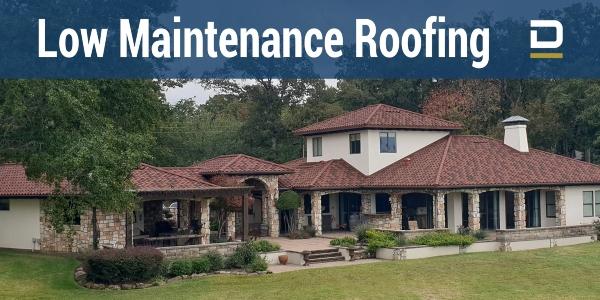
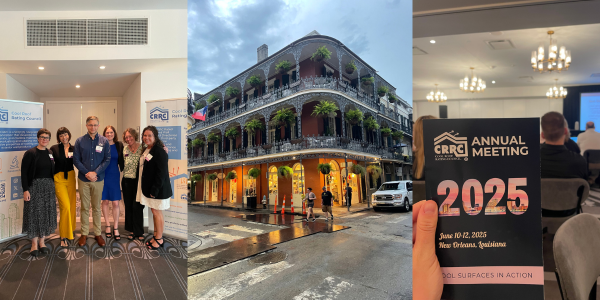
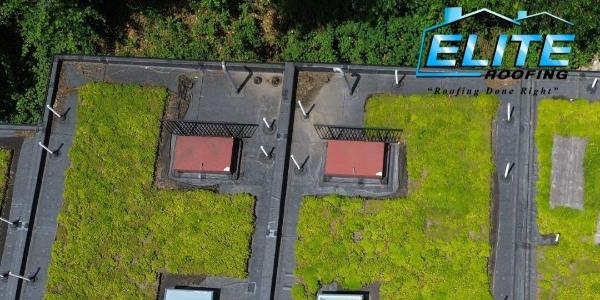





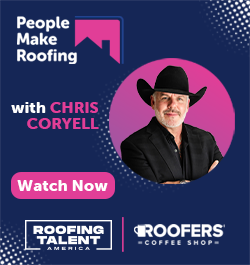
Comments
Leave a Reply
Have an account? Login to leave a comment!
Sign In